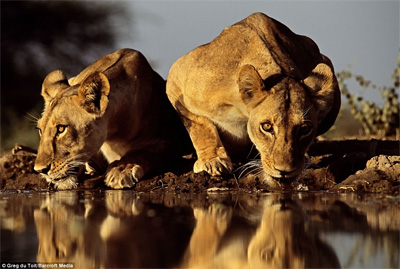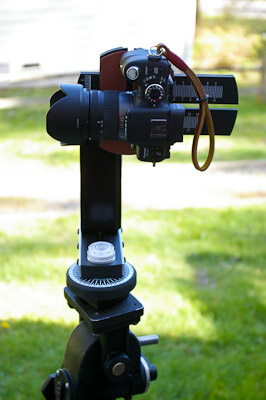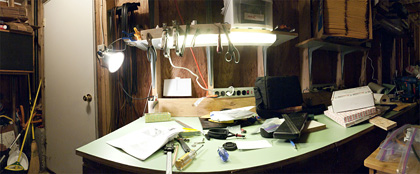

|
Archives
spelling

economy "We have waited long and patiently for our Ferdinand Pecora moment – a modern equivalent of the episode when a tough prosecutor from New York seized the imagination of the country in the early 1930s and, over a series of congressional hearings: laid bare the wrong-doings of Wall Street in simple and vivid terms that everyone could understand, and created the groundswell of public support necessary for comprehensive reregulation. On Friday, that moment finally arrived. "There is fraud at the heart of Wall Street, according to the Securities and Exchange Commission. Pecora took on National City Bank and J.P. Morgan (the younger); these were the supposedly untouchable titans of their day. The SEC is taking on Goldman Sachs; no firm is more powerful. "Pecora exposed the ways in which leading banks mistreated their customers – typically, retail investors. The SEC alleges, with credible detail, that Goldman essentially set up some trusting clients and deliberately misled them – to the tune of effectively transferring $1 billion from them to a particular unscrupulous investor. "Pecora had the drama of the congressional hearing room and used his skills as an interrogator to batter the bastions of Wall Street, day-after-day, with gruesome and convincing detail. We don’t know where and when, but the SEC action points in one direction only: Lloyd Blankfein (CEO of Goldman) in the witness box, while John Paulson (unindicted co-conspirator) waits in the on-deck circle."
photography
 "Wildlife photographer Greg du Toit was so determined to capture the perfect image of wild lions drinking he sat submerged in their watering hole for three months. "The defiant photographer had endured a year of failed attempts at getting the right picture after building hides and digging trenches near the animals' drinking spot. "In a final desperate effort, the 32-year-old decided to take the plunge and climb into the murky pool with his camera and ended up contracting several tropical diseases. "He began a long-term waiting game where he sat semi-submerged for 270 hours to get the big cats on film. "But as these never-before-seen pictures show, his hard work - three hours per day for seven days a week in the water - was definitely worth the wait. "It came at a huge price for the photographer who was diagnosed with Bilharzia and contracted several parasites which he soaked up through the dirty water in the drinking hole."
Blood, Sweat and Photographic Tears "After eight months, my wife’s patience was wearing thin and my skin was covered not only in strange bites but persistent red bumpy rashes, the cause of which I finally put down to baboon urine! One particular week, the mercury in the camp’s thermometer soared way above forty, as I once again found myself firmly entrenched in my muddy quagmire. The heat wave persisted throughout the week until late that Friday afternoon, when it seemed to be reaching breaking point. Sitting in the water was no doubt the best place to be in terms of escaping the heat, but the light was about to fade and soon I would have to leave the waterhole and return to camp for another impatient night of torment. Just as I was about to pull my rear end free from the muddy bottom and begin my trek back up the escarpment, my ever-faithful pair of Egyptian Geese leapt from the bank and hit the water with furious honking and hissing. Wondering what on earth had alarmed the geese, I quickly scanned the horizon, only to see two full-grown lionesses sauntering purposefully towards the water. This was it, I thought: eight months of literal blood, sweat and tears and now finally, my chance to ‘get it right’? "Lowering my head, I scanned my camera settings and pushed my film to cope with the lowering levels of light. Looking up again, I was horrified to see two desperately thirsty lionesses lapping away at great pace a mere five meters in front of me. I recall noticing their piercing yellow eyes and their bulging muscles, which seemed to tower above me. Had I been standing, my knees would have been knocking! Was it possible that the two felines had not noticed me? My subconscious being had decided that this was highly improbable, which manifested itself through the uncontrollable shaking of my hands. Unknowingly, my adrenal glands had been pumping adrenaline into my body, which now needed to escape but had nowhere to go, as I had to sit motionless. The result was that my hands began to shake vigorously, in such a way that even my vibration reduction technology would have been rendered utterly useless. Closing my eyes and lowering my head, I became conscious of the irony unfolding before me. Here I was, after months of patience and preparation, with my ultimate shot just meters away and no way to capture the image?
diplomacy An Empire Decomposed: American Foreign Relations In the Early 21st Century "Americans are accustomed to foreigners following us. After all, for forty years, we led the industrial democracies against the former USSR and its captive entourage. After the Soviet collapse, we bestrode the world as its sole colossus. For a while, we imagined we could do pretty much anything we wanted to do on our own. This, in the opinion of some, made followers irrelevant and leadership unnecessary.
"All this should remind us that power, no matter how immense, is not by itself enough to ordain leadership. Power must be informed by vision, guided by wisdom, and embodied in strategy if it is to inspire companions and followers. We're a bit short of believers in our leadership these days, not just on the battlefields of West Asia but at global financial gatherings, the United Nations, meetings of the G-20, among human rights and environmental activists, in the world's regions, including our own hemisphere, and so forth. There are few places where we Americans still enjoy the credibility and command the deference we once did. A year or so ago, we decided that military means were not always the best way to solve problems and that having diplomatic allies could really help do so. But it isn't happening. "The excesses that brought about the wide-ranging devaluation of our global standing originate, I think, in our politically self-serving reinterpretation of the Cold War soon after it ended. As George Kennan predicted, the Soviet Union was eventually brought down by the infirmities of its system. The USSR thus lost its Cold War with America and our allies. We were still standing when it fell. They lost. We won, if only by default. Yet Americans rapidly developed the conviction that military prowess and Ronald Reagan's ideological bravado — not the patient application of diplomatic and military "containment" to a gangrenous Soviet system — had brought us victory. Ours was a triumph of grand strategy in which a strong American military backed political and economic measures short of war to enable us to prevail without fighting. Ironically, however, our politicians came to portray this as a military victory. The diplomacy and alliance management that went into it were forgotten. It was publicly transmuted into a triumph based on the formidable capabilities of our military-industrial complex, supplemented by our righteous denunciation of evil. "Many things followed from this neo-conservative-influenced myth. One conclusion was the notion that diplomacy is for losers. If military superiority was the key to "victory" in the Cold War, it followed for many that we should bear any burden and pay any price to sustain that superiority in every region of the world, no matter what people in these regions felt about this. This was a conclusion that our military-industrial complex heard with approval. It had fattened on the Cold War but was beginning to suffer from enemy deprivation syndrome — that is, the disorientation and queasy apprehension about future revenue one gets when one's enemy has irresponsibly dropped dead. With no credible enemy clearly in view, how was the defense industrial base to be kept in business? The answer was to make the preservation of global military hegemony our objective. With no real discussion and little fanfare, we did so. This led to increases in defense spending despite the demise of the multifaceted threat posed by the USSR. In other words, it worked."
panos
 more and larger I've been wanting to do panoramics for many years. I was first bit by the pano bug in 1992 when I saw a Seattle at night pano done with a Cirkut camera. I knew I wanted to do panos. After looking into the price of Cirkut cameras I knew I wasn't going to be doing panos with a Cirkut. Shortly after that I bought a medium format pano head that rotated the camera around close to the nodal point of the lens. This was before stiching software. You printed out each print and mounted them together, seams and all. It was a period in my life of little money and I couldn't afford prints. In 2002 I started using stitching software to mixed results. I was using medium format film, scanning and stitching. A lot of work and there were always problem areas. A couple of years ago I picked up Photoshop Elements 6 for it's pano stitching. It was a big improvement but still time consuming. A few weeks ago I discovered the Panosaurus spherical pano head for digital cameras and the last piece of the pano puzzle fell into place. I had not considered a spherical pano head because of the cost but the Panosaurus is only $85. Woohoo! The instructions are a little confusing but I perservered and got it calibrated for my Panasonic G1 at 14mm (28mm equiv.) Now my Photoshop Elements 7 stitches are just about perfect. You have to pixel peep to find even the hint of a discontinuity.
 more and larger The G1 and Panosaurus ready for action.
 more and larger As soon as I finished calibrating the Panosaurus so it would rotate around the nodal point of the lens I took this pano of the world headquarters of gordy's camera straps. I've also been wrapping my head around Photoshop Lightroom 2. It is a wonderful tool. It makes life a lot easier. I can do about 80% of what I need to do in Lightroom and then pop over to Photoshop if needed. I can also print from it which is working out well. These panos need to be printed larger. I have a couple of work prints that are almost 19" long which is the longest paper that fits in the tray. I'm going to cut down some 17x22 inch paper and I may get some roll paper to cut. The Honeymoon Bay pano at the top printed at 300 dpi and without downsizing would make a print 11x44 inches which I could print on my HP.
|
|